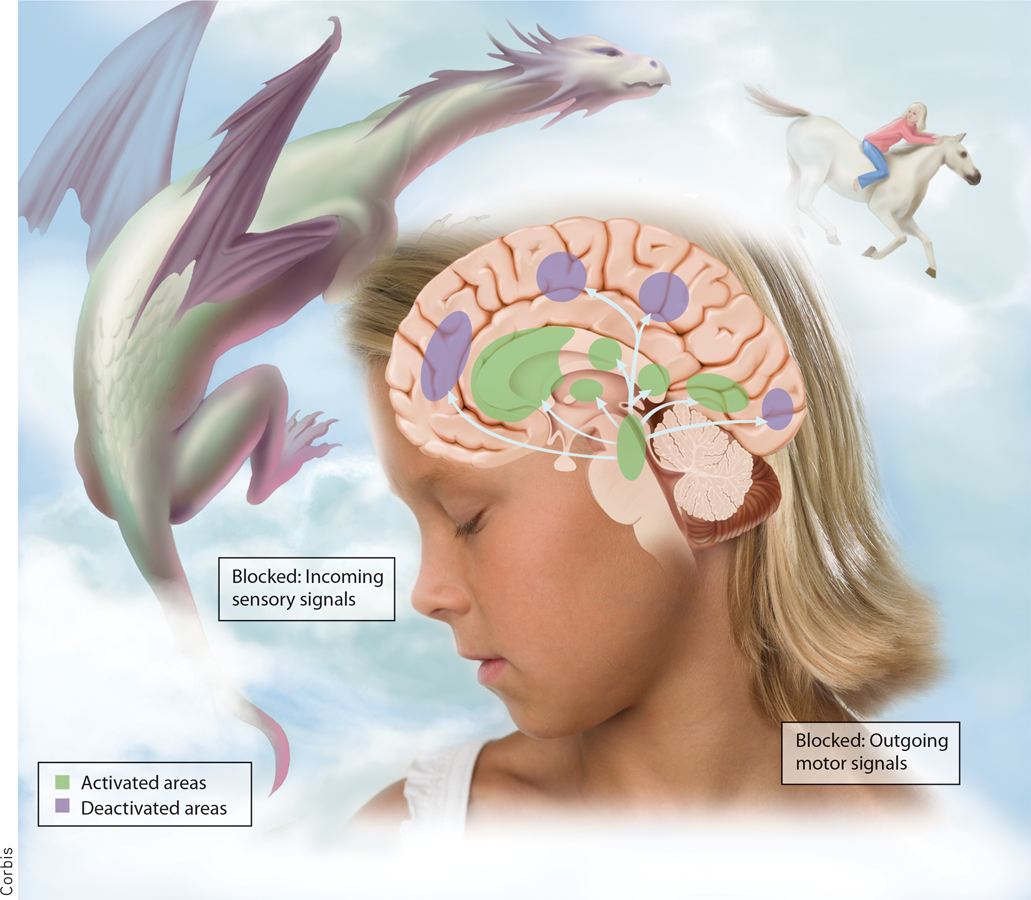
FIGURE 4.6 The Activation-Synthesis Model of Dreaming According to the activation-synthesis model of dreaming, dreaming is our subjective awareness of the brain’s internally generated signals during sleep. Dreaming is initiated when brainstem circuits arouse brain areas involved in emotions, memories, movements, and sensations. These activated brain areas, shown in green, give rise to dreaming consciousness and the dream imaginings of sensations, perceptions, movements, and feelings. The activated brain synthesizes, or combines, these elements, drawing on previous experiences and memories to impose a personal meaning on the dream story (Hobson, 2005; McCarley, 2007).
Other brain areas, highlighted in purple, are deactivated or blocked during dreaming. Outgoing motor signals and incoming sensory signals are blocked, keeping the dreamer from acting out the dream or responding to external stimuli (Pace-Schott, 2005). The logical, rational, and planning functions of the prefrontal cortex are suspended. Hence, dream stories can evolve in ways that seem disjointed or illogical. And because the prefrontal cortex is involved in processing memories, most nightly dream productions evaporate with no lingering memories of having had these experiences (Muzur & others, 2002).
Other brain areas, highlighted in purple, are deactivated or blocked during dreaming. Outgoing motor signals and incoming sensory signals are blocked, keeping the dreamer from acting out the dream or responding to external stimuli (Pace-Schott, 2005). The logical, rational, and planning functions of the prefrontal cortex are suspended. Hence, dream stories can evolve in ways that seem disjointed or illogical. And because the prefrontal cortex is involved in processing memories, most nightly dream productions evaporate with no lingering memories of having had these experiences (Muzur & others, 2002).
Sources: Research from Hobson (2005); Pace-Schott (2005).
Corbis
Corbis